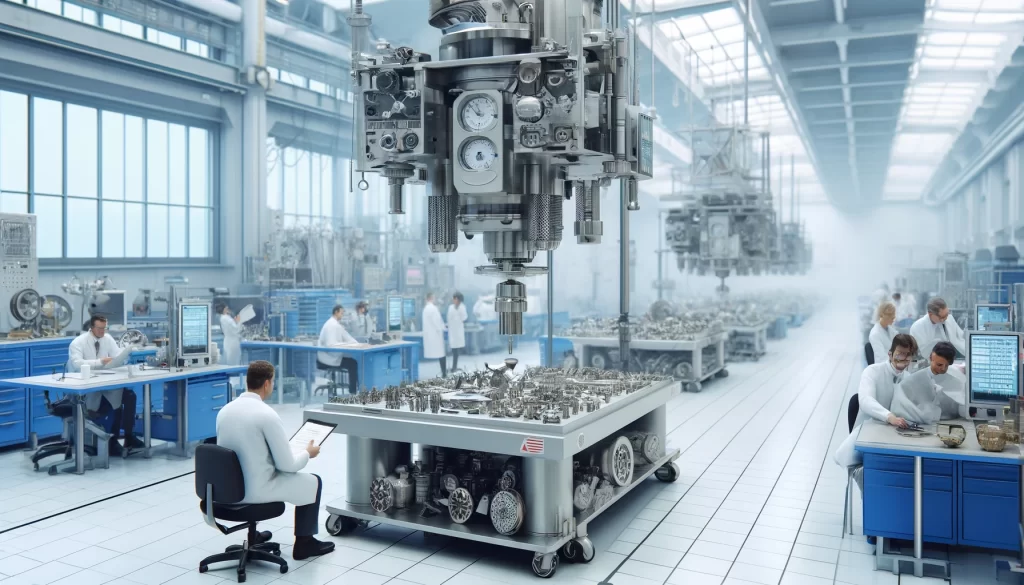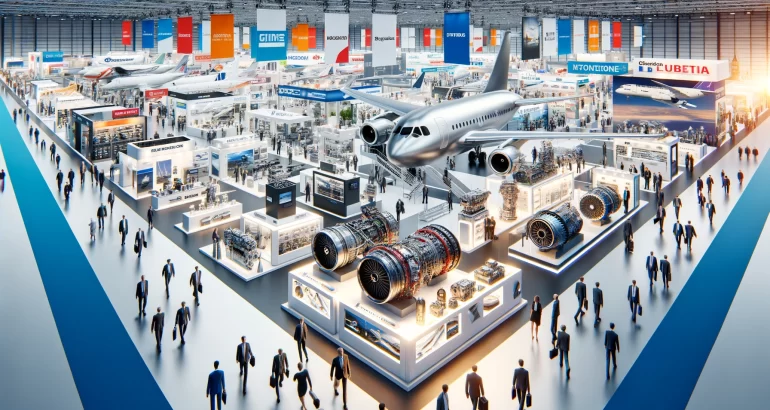Discover the intricacies of aircraft parts sourcing in Europe with our comprehensive guide. Learn about the European market, reliable suppliers, sourcing strategies, regulatory compliance, and future trends to enhance your procurement process and ensure safety and efficiency.
Introduction
The European market for aircraft parts is a critical component of the global aviation industry. Sourcing high-quality parts is essential not only for maintaining the safety and efficiency of aircraft but also for ensuring regulatory compliance and operational reliability. In this article, we will delve into the intricacies of sourcing aircraft parts in Europe, exploring the market landscape, sourcing strategies, and future trends. This comprehensive guide is designed to provide valuable insights for buyers and suppliers, emphasizing aspects that are often overlooked by industry experts.
Overview of the European Aircraft Parts Market
The European aircraft parts market is vast and dynamic, characterized by a multitude of suppliers, varying demand trends, and significant technological advancements. Understanding this market is crucial for buyers looking to make informed sourcing decisions.

Market Size and Growth
The European aircraft parts market is substantial, with a steady growth trajectory driven by the increasing demand for both commercial and private aviation. As air travel continues to rebound post-pandemic, the need for maintenance, repair, and overhaul (MRO) services has surged. This growth is projected to continue, with analysts forecasting a compound annual growth rate (CAGR) of approximately 5-6% over the next decade. This expansion underscores the importance of strategic sourcing to meet the rising demand efficiently.
Key Players in the Market
The market is dominated by several key players, including major manufacturers, distributors, and independent suppliers. Prominent companies like Lufthansa Technik, Airbus, and Safran lead the market, offering a wide range of genuine OEM aircraft parts. Additionally, numerous smaller, specialized suppliers play a crucial role in providing niche components. Understanding the landscape of these suppliers, including their strengths and specialties, is essential for effective sourcing.
Recent Trends
Several trends are shaping the European aircraft parts market. One notable trend is the increasing adoption of advanced technologies, such as predictive maintenance and additive manufacturing. These innovations are enhancing the efficiency and accuracy of parts production and maintenance. Furthermore, regulatory changes, particularly concerning environmental sustainability, are influencing the types of parts in demand. Buyers need to stay abreast of these trends to align their sourcing strategies accordingly.
FAQs
- What is the current size of the European aircraft parts market? The European aircraft parts market is substantial, with a projected compound annual growth rate (CAGR) of 5-6% over the next decade, driven by increased demand for MRO services and technological advancements.
- Who are the key players in the European aircraft parts market? Major players include Lufthansa Technik, Airbus, Safran, and numerous specialized suppliers who provide a range of genuine OEM parts and niche components.
- What are some recent trends in the aircraft parts market? Recent trends include the adoption of predictive maintenance technologies, additive manufacturing, and a focus on environmental sustainability, all of which are shaping the future of the market.
Sourcing Aircraft Parts in Europe
Sourcing aircraft parts in Europe involves a meticulous process that requires careful consideration of various factors to ensure quality, reliability, and compliance.

Identifying Reliable Suppliers
One of the first steps in sourcing aircraft parts is identifying reliable suppliers. Key criteria include certification, such as EASA (European Union Aviation Safety Agency) approval, and the supplier’s reputation in the industry. It is also important to consider the supplier’s track record in terms of delivery performance and customer service. Building strong relationships with trustworthy suppliers can significantly streamline the sourcing process.
Importance of Genuine OEM Parts
Using genuine OEM (Original Equipment Manufacturer) parts is paramount for ensuring safety and compliance. OEM parts are designed and tested to meet stringent standards, providing assurance of their quality and compatibility. Non-OEM parts, while often cheaper, can pose significant risks, including potential safety hazards and regulatory penalties. Therefore, prioritizing genuine OEM parts in the sourcing process is a best practice that cannot be overstated.
Navigating the Aviation Spare Parts Marketplace
The aviation spare parts marketplace can be complex, with numerous online platforms and trade shows offering various sourcing opportunities. Online marketplaces, such as PartsBase and ILS, provide extensive listings of available parts, making it easier for buyers to compare options. Attending trade shows, such as the MRO Europe Conference, can also provide valuable networking opportunities and firsthand insights into the latest market offerings. Leveraging these resources effectively can enhance the sourcing strategy.
FAQs
- How can buyers identify reliable suppliers for aircraft parts? Buyers can identify reliable suppliers by checking certifications such as EASA approval, reviewing the supplier’s industry reputation, and assessing their track record in delivery performance and customer service.
- Why are genuine OEM parts important for aircraft maintenance? Genuine OEM parts are crucial because they meet stringent safety and quality standards, ensuring compatibility and compliance with aviation regulations. Using non-OEM parts can compromise safety and result in penalties.
- What are some effective ways to navigate the aviation spare parts marketplace? Buyers can leverage online marketplaces like PartsBase and ILS, and attend industry trade shows like MRO Europe Conference to find quality parts and network with suppliers.
Challenges in Aircraft Parts Sourcing
Despite the robust market and available resources, sourcing aircraft parts comes with its set of challenges, which require strategic approaches to overcome.

Regulatory Compliance
Compliance with regulatory standards is a major challenge in aircraft parts sourcing. The aviation industry is highly regulated, with stringent requirements for parts certification and traceability. Ensuring that all sourced parts comply with these regulations is critical to avoid penalties and maintain operational safety. Buyers must stay updated on regulatory changes and work closely with suppliers to ensure compliance.
Quality Assurance
Quality assurance is another critical aspect of aircraft parts sourcing. Parts must undergo rigorous testing and certification processes to meet industry standards. Implementing thorough quality control measures, such as supplier audits and inspection protocols, can help ensure the reliability and safety of the sourced parts. Collaboration with suppliers to maintain high-quality standards is essential for successful sourcing.
Supply Chain Management
Effective supply chain management is crucial for timely and cost-effective sourcing of aircraft parts. The complexity of the aviation supply chain, involving multiple suppliers and logistical challenges, can lead to delays and increased costs. Developing robust supply chain strategies, including efficient inventory management and contingency planning, can mitigate these risks. Leveraging technology for supply chain optimization can also enhance efficiency and reliability.
FAQs
- What are the key regulatory compliance challenges in sourcing aircraft parts? Key challenges include adhering to stringent certification and traceability requirements set by aviation authorities. Buyers must ensure all parts comply with these regulations to avoid penalties and ensure safety.
- How can buyers ensure quality assurance in aircraft parts sourcing? Implementing thorough quality control measures, such as supplier audits and inspection protocols, and working closely with suppliers to maintain high standards are essential for ensuring quality assurance.
- What strategies can improve supply chain management in aircraft parts sourcing? Effective strategies include robust inventory management, contingency planning, and leveraging technology for supply chain optimization to mitigate delays and reduce costs.
Case Study: Successful Aircraft Parts Sourcing Strategy
To illustrate the principles discussed, let’s examine a case study of a company that successfully implemented a strategic approach to sourcing aircraft parts in Europe.

Background of the Company
XYZ Aviation, a leading provider of MRO services in Europe, faced challenges in sourcing high-quality parts for its operations. The company sought to enhance its sourcing strategy to improve efficiency and reduce costs.
Sourcing Strategy Implementation
XYZ Aviation adopted a multi-faceted approach to sourcing. This included partnering with certified OEM suppliers, leveraging online marketplaces for parts comparison, and attending industry trade shows for networking and market insights. The company also implemented stringent quality control measures and developed a robust supply chain management system.
Results and Outcomes
The new sourcing strategy yielded significant benefits for XYZ Aviation. The company achieved a 20% reduction in sourcing costs and a 15% improvement in parts delivery times. Additionally, the enhanced quality assurance processes led to fewer maintenance issues and increased operational efficiency. This case study underscores the importance of a strategic approach to aircraft parts sourcing.
FAQs
- What challenges did XYZ Aviation face in sourcing aircraft parts? XYZ Aviation faced challenges related to sourcing high-quality parts efficiently and cost-effectively, which prompted the company to enhance its sourcing strategy.
- What steps did XYZ Aviation take to improve its sourcing strategy? XYZ Aviation partnered with certified OEM suppliers, utilized online marketplaces, attended trade shows, and implemented stringent quality control measures and robust supply chain management systems.
- What were the outcomes of XYZ Aviation’s new sourcing strategy? The company achieved a 20% reduction in sourcing costs, a 15% improvement in parts delivery times, and enhanced operational efficiency due to fewer maintenance issues and better quality assurance processes.
Future Outlook for Aircraft Parts Sourcing
Looking ahead, the aircraft parts sourcing landscape in Europe is poised for significant changes, driven by technological advancements and evolving market dynamics.

Technological Innovations
Technological innovations, such as artificial intelligence (AI) and blockchain, are expected to revolutionize aircraft parts sourcing. AI can enhance predictive maintenance capabilities, allowing for more accurate forecasting of parts needs. Blockchain technology can improve traceability and transparency in the supply chain, ensuring the authenticity of sourced parts. Embracing these technologies can provide a competitive edge in the market.
Market Predictions
The future of the European aircraft parts market looks promising, with continued growth expected. Increasing air travel demand, coupled with the need for sustainable aviation solutions, will drive the demand for high-quality parts. Suppliers who can adapt to these changes and offer innovative solutions will be well-positioned for success. Buyers need to stay informed about market trends and adjust their sourcing strategies to remain competitive.
FAQs
- How will technological innovations impact aircraft parts sourcing? Technological innovations like AI and blockchain will enhance predictive maintenance, improve traceability, and ensure authenticity in the supply chain, providing a competitive edge to adopters.
- What are the market predictions for the future of aircraft parts sourcing in Europe? The market is expected to continue growing, driven by increasing air travel demand and the need for sustainable aviation solutions. Suppliers offering innovative solutions will be well-positioned for success.
- What should buyers focus on to remain competitive in the future market? Buyers should stay informed about market trends, embrace technological advancements, and adjust their sourcing strategies to adapt to changes in demand and supply dynamics.
Conclusion
Sourcing aircraft parts in Europe is a complex but crucial process that requires strategic planning and careful execution. By understanding the market landscape, identifying reliable suppliers, and navigating the challenges effectively, buyers can ensure the quality and reliability of their sourced parts. Looking to the future, embracing technological innovations and staying ahead of market trends will be key to successful aircraft parts sourcing. Strategic sourcing not only ensures compliance and safety but also enhances operational efficiency and cost-effectiveness, making it an essential aspect of the aviation industry.
